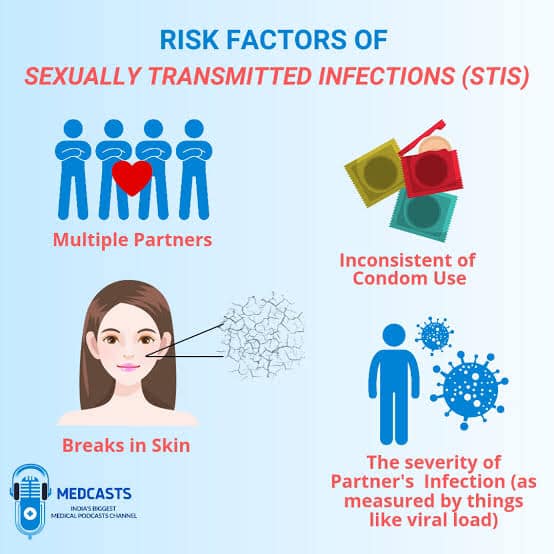Examples of sexual risk behaviors associated with exposure to a sexually transmitted infection (STI) include: (Select all that apply.)
abstinence.
multiple sex partners.
unprotected anal intercourse.
oral sex.
Correct Answer : B,C,D
Choice A reason: Abstinence is the avoidance of sexual activity, which reduces the risk of exposure to STIs. It is not a sexual risk behavior.
Choice B reason: Multiple sex partners increases the likelihood of exposure to STIs, especially if the partners are not tested or treated. It is a sexual risk behavior.
Choice C reason: Unprotected anal intercourse exposes the mucous membranes of the rectum and anus to potential pathogens, which can cause STIs such as gonorrhea, chlamydia, syphilis, and HIV. It is a sexual risk behavior.
Choice D reason: Oral sex involves contact between the mouth and the genitals or anus, which can transmit STIs such as herpes, HPV, gonorrhea, and syphilis. It is a sexual risk behavior.
Choice E reason: Dry kissing is the contact between the lips without the exchange of saliva, which does not transmit STIs. It is not a sexual risk behavior.

Nursing Test Bank
Naxlex Comprehensive Predictor Exams
Related Questions
Correct Answer is A
Explanation
Choice A reason: Intense abdominal pain is the most prevalent clinical manifestation of abruptio placentae, as it indicates the detachment of the placenta from the uterine wall and the bleeding into the uterine muscle. The pain can be localized or diffuse, and it can be constant or intermittent. The pain can also radiate to the back or the shoulder.
Choice B reason: Cramping is not the most prevalent clinical manifestation of abruptio placentae, as it is not specific to the condition. Cramping can occur in normal pregnancy or in other complications such as preterm labor, infection, or cervical insufficiency.
Choice C reason: Uterine activity is not the most prevalent clinical manifestation of abruptio placentae, as it is not specific to the condition. Uterine activity can occur in normal pregnancy or in other complications such as preterm labor, infection, or placenta previa.
Choice D reason: Bleeding is not the most prevalent clinical manifestation of abruptio placentae, as it may or may not be present. Bleeding can be concealed or revealed, depending on the location and extent of the placental separation. Concealed bleeding occurs when the blood is trapped behind the placenta and does not exit the vagina. Revealed bleeding occurs when the blood passes through the cervix and exits the vagina.
Correct Answer is B
Explanation
Choice A reason: Braxton Hicks contractions are irregular, painless uterine contractions that occur throughout pregnancy. They are a probable sign of pregnancy, not a positive sign.
Choice B reason: Fetal movement palpated by the nurse-midwife is a positive sign of pregnancy, as it confirms the presence of a living fetus in the uterus. It can be detected as early as 16 to 20 weeks of gestation.
Choice C reason: A positive pregnancy test is a probable sign of pregnancy, as it indicates the presence of human chorionic gonadotropin (hCG) in the urine or blood. However, it is not a definitive sign, as other conditions can cause elevated hCG levels.
Choice D reason: Quickening is the first perception of fetal movement by the mother, which usually occurs between 16 and 20 weeks of gestation. It is a presumptive sign of pregnancy, not a positive sign.
Whether you are a student looking to ace your exams or a practicing nurse seeking to enhance your expertise , our nursing education contents will empower you with the confidence and competence to make a difference in the lives of patients and become a respected leader in the healthcare field.
Visit Naxlex, invest in your future and unlock endless possibilities with our unparalleled nursing education contents today
Report Wrong Answer on the Current Question
Do you disagree with the answer? If yes, what is your expected answer? Explain.
Kindly be descriptive with the issue you are facing.
